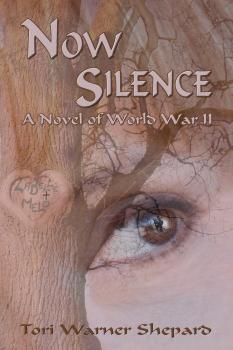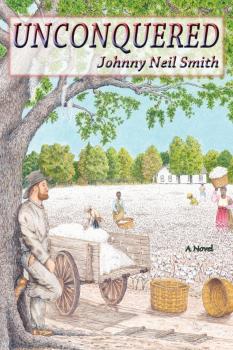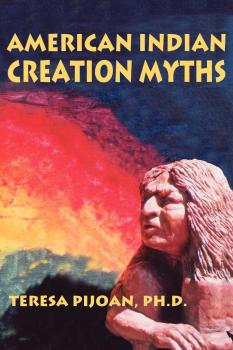ТОП просматриваемых книг сайта:
Ingram
Все книги издательства IngramАннотация
In this superbly researched WWII novel, award-winning writer, Tori Warner Shepard, captures the mood of remote Santa Fe, New Mexico as it waits out WWII for the return of her men held in Japanese prison camps. POW Melo Garcia has survived the Bataan Death March in the Philippines but his brother and father have not. Along with 1,500 other American prisoners, he is diseased, tortured, starved, and used as slave labor in a condemned coal mine outside of Nagasaki, Japan. Melo is the last living hope to continue his family's centuries old line for his war-widowed mother, Nicasia, who prays for his return alongside his sweetheart, LaBelle. They have received no reliable news since the surrender to the enemy in 1942. The novel is as much a story of the men's heroism as it is of their Hispanic community which after Pearl Harbor was a distant and a safe refuge from the war, sought out by the US Government as an internment camp for 2,000 Japanese “Isseii” barely a mile from the office of the top-secret Manhattan Project that was developing the atomic bomb to be dropped 20 miles from Melo's prison camp. Add to the mix FBI and counter-intelligence agents, Gringo fanatics opposed to Roosevelt, Melo's “novia” LaBelle and Phyllis, the redheaded bombshell, who challenges her. And Melo himself with his mother who embodies “gracia,” a word that does not translate. This gripping exposition of the Japanese atrocities is even-handed and the characters and personalities on the home front will haunt your memory. TORI WARNER SHEPARD grew up in post-war Japan and since moving to Santa Fe over thirty-five years ago has been absorbed by the story of the POWs, their welcome home, and the effects of the war on a tight isolated community. She has an M.A. in Creative Writing which she has taught, and has published poetry, articles and short stories. Winner of the Mountainland Award for Contemporary Fiction, she has three grown children and lives with her husband in an old adobe.
Аннотация
Neil Bronson, new from the Royal Academy, summers in Provence, teaching himself to paint outside. Before returning home, he and his friends, Sam and Carrie, rent a cottage on the coast, playing a langorous triangle of seaside sexual attraction. Neil’s uncle interrupts the idyll, urgently seeking their help teaching at his art school in Santa Fe. A month later, Bronson and Sam move into Casa Marriner and meet the faculty members, several jealous and difficult. Bronson teaches plein air classes, often at the Galisteo escarpment. At first, the students are confrontational and awkward, but they soon grasp his enthusiasm with the New Mexico landscape. While they learn new skills, he refines his, taking the escarpment as a major motif. Crisis at the school involves Bronson in a curious project and a trip abroad to Greece. Besides discovering himself in Santa Fe, he explores the world of sex and love with one of his students, Salazar. New York must wait. DOUGLAS ATWILL’s early days were in Pasadena, California and Midland, Texas. He served in the US Army Counterintelligence Corps and earned a BA from University of Texas at Austin. After some years in Virginia and Europe, he settled in Santa Fe to pursue painting full-time. From a studio on Canyon Road, he paints landscapes and paintings of his own garden. His work is shown in galleries throughout the nation. Atwill’s avocation of house design, small vernacular residences in classic Santa Fe style, many of which have been featured in books and magazines, has brought him a reputation for excellence. His collection of short stories, “Why I Won’t Be Going to Lunch Anymore,” was published in 2004 by Sunstone Press. This is his first novel.
Аннотация
The year is 1923, and one of Ohio’s most prominent judges, O’Brien O’Donnell, fathers his first and only child. Though a joyous occasion for the recently married, fifty-nine year old, the birth sets off a terrifying chain of events, beginning with blackma
Аннотация
In the antebellum American South, a family who were among the first to enter east central Mississippi in the 1830s are forced into the Civil War despite their opposition to slavery. Many hardships in the unspoiled wilderness, their unusual friendship with the native Choctaws, and extreme trials following the crushing events of defeat in the war are woven into this story that takes the reader back into an era when a society that supported slavery as an institution was considered both moral and necessary. JOHNNY NEIL SMITH has always been interested in history and as an educator in Mississippi and Georgia, has taught Mississippi, Georgia, American and World History. He is now retired as headmaster of Piedmont Academy in Monticello, Georgia. Over the years, he has spent numerous hours reading about the War Between the States and visiting battlefields where his great-grandfathers fought. The main character, John Wilson, was named after his grandfather and many of the accounts of battle and prison life relate to his great grandfather, Joseph Williams, who lost an arm in the battle for Atlanta and was sent to a Federal prison in Illinois. Smith has tried to recapture the emotion that existed during this time in history as was told to him by people who lived during that era. In one sense, this is their story.
Аннотация
As in the lives of people we all know, this story presents a dozen fictional Santa Feans trying to love, yet mistreating, each other the week before US forces invade Iraq. “The aggression that dominates American life today,” says author Michael Scofield, “goads them into brandishing their dark sides.” Married realtor Maxine Morgan, for instance, coaxes conservative mortgage broker Ron Kirkpatrick (and others) into bed. Ron’s not-quite-yet-psychotic wife Lila tries to seduce handyman Victor Valdez. High-tech writer Manny Barnes falsely promises his fiancée to give up in-your-face activism. CPA Chuck Ridley leaves his family for Silicon Valley CEO Bret, who changes his mind about war. In an ambiance of black humor and misfiring sex, readers will find themselves embracing Maxine’s attempt to escape from nymphomania after meeting a retired war correspondent, Victor’s desperate scheme to care for his mother while returning to carving Santos, Lila’s plan to destroy Maxine, Manny’s longing to give Joyce a baby, and Chuck’s joy in discovering he’s gay. You’ll laugh a lot–but you’ll also weep to see how our increasing turmoil at home in the United States mirrors our ongoing behavior overseas. Yale University graduate MICHAEL SCOFIELD received his MFA in Writing from Vermont College in 2002. Currently he teaches creative-writing skills to half a dozen students one-on-one. The author of two books of poems, «Silicon Valley Escapee» (2000) and «Whirling Backward into the World» (2006), he also has published books on bird-watching and do-it-yourself upholstering. Before moving to Santa Fe, New Mexico in 1995, his wife and he ran a high-tech marketing-communications business from their home in Palo Alto, California.
Аннотация
"How Far The Mountain" is the story of a man, a woman, and a mountain. The woman, from the city, must go to the mountain to discover who she is after her husband's death from cancer. The man, a cowboy, must force himself to go to the mountain and make a shrine from the bones of 'Texas Lady,' the horse his wife was riding when she was killed by lightning. The mountain is only a mountain but, in itself, is the creator of stories more profound than any two peoples' needs. The woman, after her husband's death, is thrown into a world she does not understand. She forces herself to go alone to the mountain in an attempt to chase away the loneliness that tugs at the corners of her heart. The man has spent his life guiding people into the mountains. Now lost, after the mountain has killed his wife, and accompanied by his dog, Gypsy, he returns to the mountain to try and rid himself of the demons that control his every moment. The man and woman both have needs and desires, but life has destroyed their dreams. They both are desperately seeking love but they are afraid to reach out, fearing if they find love it will only end in another tragedy. The man and woman, unknown to each other, start from opposite sides of the mountain toward the same meadow. It is only by chance they see each other in the distance–one waves but one ignores it, afraid of the warmth from a wave. During the man and woman's exodus the mountain spins its history: stories of its beginning, tales of miners, trees so large they touch the heavens, Indians, outlaws, gamblers, dreamers, great bears, thundering storms, bones and circling ravens. «How Far The Mountain» is a quest for the human spirit and a tribute to the earth's healing magic. A novel that will leave you warm and knowing that no matter what tragedy life brings, there is always hope. ROBERT K. SWISHER JR. has been a ranch foreman and a mountain guide. He knows the outdoors and western history, and has successfully combined these interests in stories, poems and novels. He is also the author of «The Land,» «Fatal Destiny,» «Only Magic,» «The Last Narrow Gauge Train Robbery,» «Last Day In Paradise» and «Love Lies Bleeding,» all from Sunstone Press. Of «The Land,» «Publishers Weekly» said: «If there were a category of historical romances written for men, this moving novel would fit the bill.»
Аннотация
Following a tragic accident, Leslie Cohen, MD, is driven to live the nomadic life of a “locum tenens” physician, moving from one temporary job to another, covering the practices of orthopedic surgeons while they take time off. Deeply affected because of her loss, this enables her to avoid forming relationships, both friendly and professional. And she is determined. But all of this changes when she agrees to a one month commitment in Abilene, Texas, temporarily taking over the practice of Hal Hawley while he goes on leave to have surgery for cancer. Soon after arriving she realizes her mistake in taking on an extended post as she develops a strong bond with Doc Hawley and his wife. Even more significant is the friend she finds in Regan Wakeman, a local rancher and contractor. There is conflict in her soul as Leslie tries to protect the memories she wants to keep alive no matter how painful they might be. As the relationship with him progresses, there is a gradual revelation of the tragedy that has remained her secret until now. BARBARA BERGIN practices orthopedic surgery in Austin, Texas, where she resides with her husband and two children. She competes in reining, reined cow horse and cutting, and has been ranked nationally in the reined cow horse performance sport. She and her husband own a ranch in Smithville, Texas.
Аннотация
After four years of bitter struggles and immeasurable cost in human lives and property, the armies laid down their weapons and the country was reunited. But there was a magnitude of problems emerging from the rebellious and war-torn South and the now-freed slaves. The freed slaves, excited about their liberation, were led to believe that they would receive “forty acres of land and a mule,” but this didn’t happen. The politicians felt that freedom, citizenship, and the right to vote was enough for them. True equality was never pondered, and these people, emerging from servitude, were met with apathy and resentment. Who would represent these people, and who would mend the bitter feelings and destruction left by the war? John Wilson, who first appeared in the author’s “Hillcountry Warriors” which was acclaimed as “an above-par work of period fiction” by “Publishers Weekly,” was such a man. Wilson had fought for the Confederacy and upon returning to his home in Mississippi, felt there was room for all races. In essence, he was a man beyond his time. As long as Federal troops were stationed in the South, some order existed, but when they were removed in 1876, an internal struggle for power erupted. As time passed, Wilson was eventually appointed a district judgeship and he felt that he could make his dream of justice for all a reality. This is his story, and the story of many who labored to mend the bitter feelings and destruction left by the Civil War. JOHNNY NEIL SMITH, author of the critically acclaimed “Hillcountry Warriors” of which “Unconquered” is the sequel, is now a retired educator and has always had a deep interest in early American history. Since four of his great grandfathers served in the Confederate Army, he is fascinated with the American Civil War and has spent years of research on the subject.
Аннотация
Myths tell us much about a people. And all cultures have creation myths. The myths collected by the author in this book tell us about the rich and varied lives and imagination of the first Americans. They vary from simple to complex and all attempt to answer the question of human origin. Native Americans are of profound beginnings. Each Tribe, Group or Pueblo hold their beginning to be truths, unique from one another. The beliefs in this book are only a sampling of the many that still exist today. “In collecting these tales,” the author says, “no tape recorder was used and no notes were taken during the telling. Immediately after the session copious notes were taken and later expanded into a recreation of the myth. Subjects were located through word of mouth and after a short time people started coming forward and volunteering their stories. The people hold the stories. May they continue to tell and share with their families, communities, and the outsiders. We have much to learn from Creation, from each other, and from the holders of the stories.” TERESA PIJOAN was raised on the San Juan Pueblo Indian Reservation in New Mexico and later her family moved to the Nambe Indian Reservation. She is a national lecturer, storyteller, research writer, college professor, and teacher. She has lectured throughout Central Europe, Mexico, and the United States. Her other books from Sunstone Press are “Healers on the Mountain,” “Pueblo Indian Wisdom,” “Ways of Indian Magic,” and “Dead Kachina Man.”










